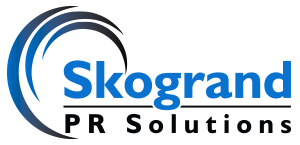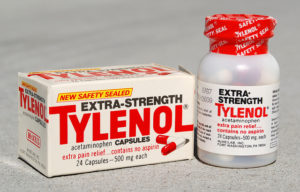To millions, Tylenol is an effective over-the-counter pain reliever. In public relations circles, however, the 1982 Tylenol recall represents the epitome of crisis communications.
At that time, Tylenol was a very important product to its manufacturer, Johnson & Johnson. Tylenol represented 33 percent of the company’s year-to-year profit growth and outsold the next four leading painkillers combined.
In fall 1982, a horrible crisis happened. Someone replaced Tylenol Extra-Strength capsules with cyanide-laced capsules, resealed the packages and placed them back on the shelves of at least six pharmacies and grocery stores in the Chicago area. Seven people died after consuming the tainted capsules.
Robert Andrews, assistant director for public relations at Johnson & Johnson at the time, is quoted in Dieudonnée ten Berge’s book “The First 24 Hours: A Comprehensive Guide to Successful Crisis Management,” on how the company initially heard the news: “We got a call from a Chicago news reporter. He told us that the medical examiner there had just given a press conference saying that people were dying from poisoned Tylenol. He wanted our comment. As it was the first knowledge we had here in this department, we told him we knew nothing about it. In that first call we learned more from the reporter than he did from us.”
Johnson & Johnson Chairman James Burke swiftly formed a seven-member strategy team, guiding them to answer two questions: “How do we protect the people?” and “How do we save the product?”
Johnson & Johnson immediately used media relations to alert consumers not to take Tylenol — and to not resume until the extent of the tampering was determined. The company also stopped producing and advertising Tylenol, and withdrew the product from store shelves in the Chicago area.
Two more contaminated bottles were discovered, and Johnson & Johnson took the major step of ordering a national recall of Tylenol.
The national recall, despite a small chance of discovering more cyanide-laced capsules, demonstrated the company’s commitment to public safety. As a result, Johnson & Johnson was perceived as a victim.
In addition to the national media alert and interviews, Johnson & Johnson:
- Established a 1-800 hotline for consumers to call,
- Created a toll-free line for the media to call and receive recorded messages with the latest statements on the crisis,
- Held press conferences at the corporate headquarters, and
- Set up a live satellite feed to the New York metro area.
At one of the press conferences, Johnson & Johnson revealed the new Tylenol triple safety seal packaging — a glued box, a plastic seal over the neck of the bottle, and a foil seal over the mouth of the bottle.
The Tylenol crisis was a major nationwide news story, with 90 percent of Americans having heard of the news in the first week. Two clipping services found more than 125,000 news stories on the crisis.
Beyond the recall and changing product packaging, Johnson & Johnson provided the victims’ families counseling and financial assistance — even though the company was not responsible for the tampering.
The crisis shaped Johnson & Johnson’s public relations strategy from a passive to proactive approach.
By deftly handling the Tylenol crisis, Johnson & Johnson completely recovered the market share lost during the crisis and reestablished Tylenol as one of the most trusted over-the-counter consumer products.
To read more public relations case studies, buy the book Promoting Your Business: How to Harness the Power of Media Relations and Influencer Marketing.
For insights on the Johnson and Johnson baby powder lawsuit, read this blog post.

